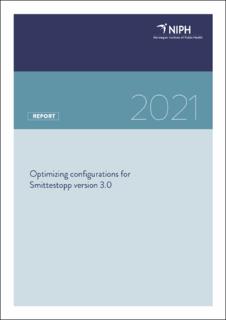| dc.description.abstract | Hovedbudskap
Introduction
The Norwegian Bluetooth-based contact tracing app “Smittestopp” was launched in December 2020 as a supplement to manual contact tracing. The purpose was to rapidly notify people about possible exposure to SARS-CoV-2 in situations where manual contact tracing can be challenging. As the majority of the population is being vaccinated, social restrictions are gradually being lifted. However, the epidemic situation is still fragile with the emergence of new variants of SARS-CoV-2. Thus, until society is fully reopened, the Smittestopp app can be a useful tool to encourage targeted testing. If new variants spread more rapidly across larger distances, this raises the question of whether or not the criteria exposure notification should change. The Smittestopp app version 3.0 has a feature that makes the App more adjustable to criteria set by the health authorities. Running a test with the new version was essential for collecting a robust data set on which configuration setting is the best for different epidemic situations.
Methods
To test the new version of the Smittestopp app (v3.0), we simulated a real-life scenario, standing in a queue, with 5 people, and repeated this 6 times. The participants were standing in a queue, with a 1-meter distance between them, and had 5 phones each. To simulate different duration and distances of contact, the app was switched off at different times (4-20 min) for each of the phones. We registered one phone as infected and all other phones were contacts. By using a developer version of the app, data regarding exposure could be collected from each phone and analyzed. We analyzed the data using different settings within the app, including several attenuation thresholds (55-80dB), different time cut-offs, and weights for each attenuation threshold. Based on these settings we calculated the proportion of close contacts and others who would receive a notification. We identified the settings that yielded the most optimized notification rates among contacts while minimizing the rate of false exposure notifications.
Results
Data was received from 144 exposed phones during three days of testing. 4 phones were excluded due to errors. Of the 140 exposed phones 36 phones were contacts (< 2 meters, > 15 min) and 104 were non-contacts (> 2 meters, or < 15 min). Exposure notification rates from 72 different settings showed that performance could be considerably improved by adjusting configurations, weights, and time thresholds. The highest notification rate among contacts was 91.7% which was achieved with attenuation thresholds of 55, 70 and 80 dB with weights of 2.0, 1.5, and 0.5 and a time threshold of 13 minutes. This also notifies 32.7 % of the non-contacts, resulting in a precision of 46.0 %, recall of 91.7 % and accuracy of 73.6 %.
Conclusion
By adjusting the attenuation thresholds, time thresholds and weights, we were able to improve the notification of contacts without increasing the notification of non-contacts. The ability to adjust these settings is important, especially when the local situation changes. | en |
